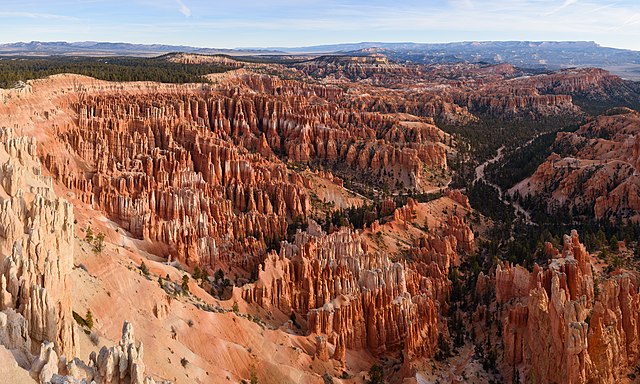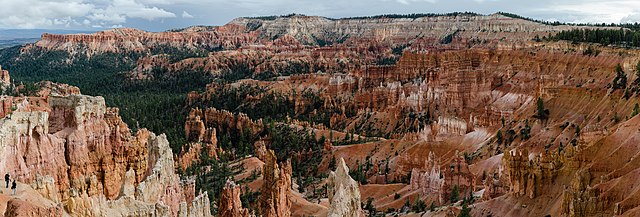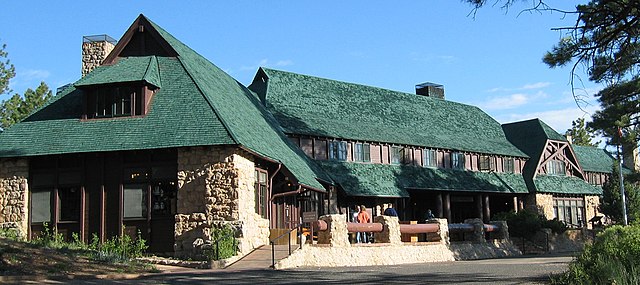The Grand Staircase is an immense sequence of sedimentary rock layers that stretch south from Bryce Canyon National Park and Grand Staircase–Escalante National Monument, through Zion National Park, and into Grand Canyon National Park.
View from Utah Highway 12 of Grand Staircase–Escalante National Monument
The Cockscomb at right runs along Cottonwood Canyon Road
The Grand Staircase. Red dots from left to right: Pink Cliffs, Grey Cliffs, White Cliffs, Vermilion Cliffs, Chocolate Cliffs (NPS image)
Fossilized skeleton (partial) of a young hadrosaur displayed at the Grand Staircase–Escalante National Monument Click image for display placard text
Bryce Canyon National Park
Bryce Canyon National Park is an American national park located in southwestern Utah. The major feature of the park is Bryce Canyon, which despite its name, is not a canyon, but a collection of giant natural amphitheaters along the eastern side of the Paunsaugunt Plateau. Bryce is distinctive due to geological structures called hoodoos, formed by frost weathering and stream erosion of the river and lake bed sedimentary rock. The red, orange, and white colors of the rocks provide spectacular views for park visitors. Bryce Canyon National Park is much smaller and sits at a much higher elevation than nearby Zion National Park. The rim at Bryce varies from 8,000 to 9,000 feet.
Bryce Canyon National Park
Bryce Amphitheater from Sunrise Point
Ebenezer Bryce and his family lived in this cabin below Bryce Amphitheater (c. 1881).
Bryce Canyon Lodge was built between 1924 and 1925 from local materials.








